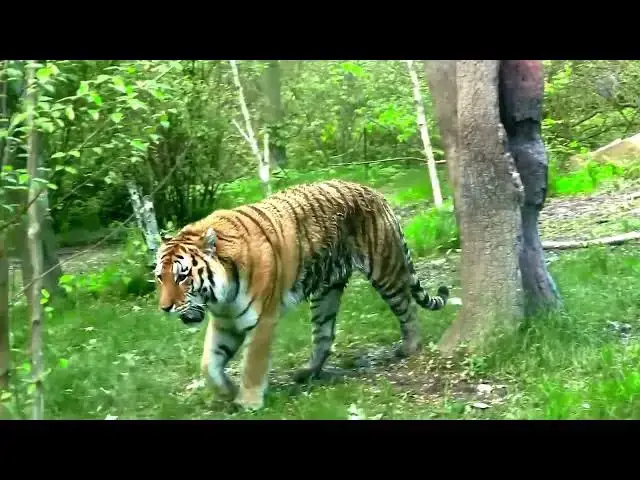Explore how tigers communicate in open grasslands using visual signals, scent marking, and vocalizations. Learn about their unique adaptations for this environment and the importance of understanding these communication methods for tiger conservation efforts.
Show More Show Less View Video Transcript
0:00
tiger Communication in open grasslands
0:03
signals and
0:05
strategy
0:07
Tigers The Majestic big cats of Asia are
0:11
known for their strength and
0:14
stealth but how do these solitary
0:16
Predators communicate with each other in
0:19
the vast open grasslands they sometimes
0:23
inhabit this question leads us into the
0:26
fascinating world of tiger
0:28
communication in open grasslands Tigers
0:32
face unique
0:34
challenges unlike dense forests these
0:37
environments offer less cover and fewer
0:39
physical
0:41
landmarks this makes effective
0:43
communication even more crucial for
0:46
Tigers to establish territories find
0:48
mates and avoid
0:51
conflicts Tigers use a combination of
0:54
visual old factory and auditory signals
0:58
to communicate
1:00
in grasslands visual communication takes
1:03
on added
1:05
importance Tigers rely on their
1:07
distinctive coat patterns body postures
1:11
and facial expressions to convey
1:13
messages a tiger with ears flattened and
1:17
teeth bared is clearly sending a warning
1:20
while one with relaxed features and
1:22
blinking eyes might be signaling a more
1:25
peaceful
1:26
intent scent marking is another vital
1:29
form of of tiger communication
1:31
particularly well suited to open
1:34
environments tigers have scent glands
1:37
near their tails and pores which they
1:39
use to leave chemical messages on trees
1:42
rocks or grass
1:44
stalks these scent marks can convey
1:48
information about the Tiger's identity
1:51
reproductive status and territorial
1:54
boundaries in grasslands where physical
1:57
barriers are less common these old
2:00
Factory signposts become essential for
2:02
maintaining spatial organization among
2:05
Tigers vocalizations play a crucial role
2:09
in Tiger
2:10
communication especially in open areas
2:13
where sound can travel
2:15
far tigers have a wide range of
2:18
vocalizations from the famous Roar that
2:21
can be heard up to 3 kilm away to more
2:24
subtle sounds like chuff Grunts and even
2:29
infrasound rumbles that humans cannot
2:32
hear these vocalizations serve various
2:35
purposes such as longdistance
2:37
communication mating calls and warnings
2:40
to potential
2:42
Intruders in grassland habitats tigers
2:46
have adapted their communication
2:47
strategies to suit the open
2:50
terrain they may use elevated positions
2:53
like small hills or termite Mounds to
2:55
leave visual or scent marks increasing
2:58
their visibility and scent
3:01
dispersion their vocalizations might be
3:03
modulated to carry further across the
3:05
Open
3:07
Spaces understanding how Tigers
3:09
communicate in open grasslands is not
3:12
just a matter of scientific
3:14
curiosity it has important implications
3:17
for Tiger
3:18
conservation by comprehending their
3:21
communication patterns Wildlife managers
3:24
can better monitor tiger populations
3:26
assess their habitat use and Implement
3:29
more effective conservation
3:32
strategies as we continue to study and
3:34
protect these magnificent creatures the
3:37
intricate ways they communicate in their
3:40
grassland homes remind us of the complex
3:43
and fascinating lives of
3:46
tigers their ability to adapt their
3:49
communication to different environments
3:52
showcases the remarkable intelligence
3:54
and adaptability of these endangered big
3:57
cats
#Wildlife
#Biological Sciences
#Biological Sciences
#Ecology & Environment

